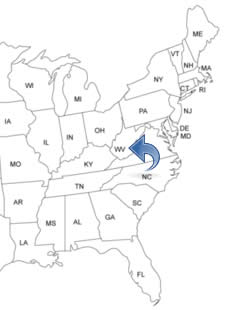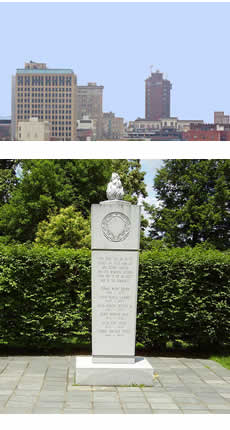WEST VIRGINIA PEOPLE SEARCH!
- ✔ Contact Info
- ✔ Phone Numbers
- ✔ Criminal Records
- ✔ Income Info
- ✔ Neighbors
- ✔ People's Age
- ✔ Property Ownership
- ✔ And Much More
Huntington, West Virginia
Huntington is located in the western part and is the second largest city in the U.S. State of West Virginia. Huntington is home the Marshall University. The city has many industries working with metal and welding trades and the Port of Huntington-Tristate is the largest inland port in the United States. Here you will find an excellent music and restaurant scene. Festivals and other events often take place in Pullman Square and in downtown.
To See And To Do In Huntington
- Downtown
- The Keith Albee Theatre
- Huntington Museum of Art
- Pullman Square
- Historic Camden Park
- Ritter Park
- Mountain State Mystery Train
- Harris Riverfront Park
- Heritage Farm Museum & Village
- Marshall University
- Museum of Radio and Technology
- Old Central City
- J. Taylor's Auto Collection
- Memorial Park and Arch
- Pullman Square Summer Concert Series
History Of Huntington - Timeline
In 1775, the first settlers opened a small trading post, Holderby's Landing, and Huntington was founded.
In 1821, the farmer and businessman James Holderby purchased a farm and built a brick house where Marshall University now stands. Richard and Benjamin Brown established a river landing for boats. In 1842, (by way of anecdote) the famous writer Charles Dickens cruised down the Ohio River with his wife and her maid and past the future site of Huntington.
In 1837, the Marshall Academy was established In 1869, Collis P. Huntington bought the ailing C&O Railroad and in 1871, the city of Huntington was incorporated and was named for the railroad magnate Collis P. Huntington. Also in 1871, the weekly paper, the Independent, was published.
In 1872, Isaac H. Mitchell became the Town Marshal of the city. In 1873, the railway was built and the first locomotive could be seen in the city. In 1875, the Old Bank of Huntington opened. It was in the same year robbed by the Jesse James Gang. They opened the safe and stole around $10,000.
In 1882, a telephone line was built and in 1884, the city had telephones. In 1886, the city had electric street lights and the Huntington State Hospital was built.
In 1887, the city's first daily newspaper, the Evening Times, was published. In 1889, the Huntington Advertiser was founded. In 1893, the daily newspaper, the Huntington Herald, later the Herald-Dispatch, was founded.
In 1900, nearly 12,000 people were living in the city. In 1903, a pavilion was built which later became Camden Park. In 1913, Ritter Park opened. In the same year, the Ohio River flooded the city and thousands of people became homeless.
In 1924, the St. Mary's Hospital opened. In 1926, the Sixth Street Bridge opened to traffic. In 1928, the Keith-Albee Theater opened. In 1937, Huntington's worst flood left 6000 people homeless. In 1949, WSAZ-TV started.
In 1952, a fire at the Huntington State Hospital killed 17 children and women. In 1956, the Cabell-Huntington Hospital opened. In 1960, John F. Kennedy visited the city. In 1970, a DC-9 jet with 75 Marshall University football players, coaches, staff, and supporters crashed and everyone was killed. In 1985, the East Huntington Bridge was completed. In 1994, the Cabell Midland High School was established and in 1996, the Huntington High School was established.

